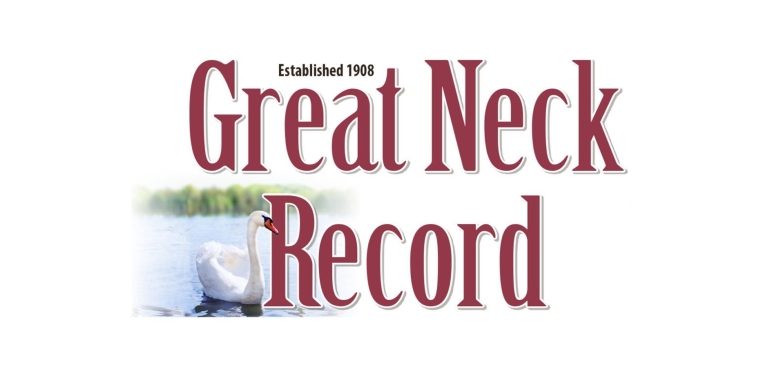
Great Neck Wastewater Treatment Plant Receives Grant To Upgrade Environmental Lab

In early November, the Great Neck Water Pollution Control District (GNWPCD) received a $200,000 grant from New York State Senator Anna Kaplan. The grant will find upgrades to the environmental laboratory at the GNWPCD’s wastewater treatment plant located on East Shore Road in Great Neck.
The GNWPCD has provided sewage services for the Great Neck area since 1914, and currently serves more than 25,000 residents and businesses in the villages of Great Neck, Saddle Rock, Kensington, and those parts of Thomaston and Great Neck Plaza east of Middle Neck Road; as well as unincorporated areas north of the Long Island Railroad and a part of Manhasset. The GNWPCD’s mission is to protect human health, our bays and the environment.
The grant will provide state-of-the-art laboratory equipment to improve wastewater treatment and better protect the environment. The equipment will also allow for more on-site public health data sampling and reduce costs at the public utility. Wastewater treatment is utilized to protect the environment and the health of our society.
In a press release from the office of Senator Kaplan, she said, “the work being done at GNWPCD’s environmental laboratory is vital to protecting our public health and our environment. By upgrading this important facility with the latest technology, we can better protect our bays and our groundwater, and we can deliver more efficient and cost-effective service for taxpayers. I’m proud to be able to support this important project by delivering the funding that will get it built.”
“We appreciate the time and effort Senator Kaplan has spent for our District in obtaining this grant,” said Patty Katz, GNWPCD Chairwoman. “The laboratory upgrades it will provide will help us to continue to protect our environment and further optimize our treatment efficiency.”
The Great Neck Record spoke with GNWPCD Superintendent Christopher Murphy about how the funds from the grant will be used and the various benefits for the wastewater treatment facility and the surrounding community.
“The laboratory that we use now is a repurposed pump station on site. So it was a pump station, and we put equipment there, and we’ve been using it as a lab for about 11 years now. We’ve been making it work,” said Murphy.
According to the office of Senator Kaplan’s press release, “the GNWPCD’s wastewater treatment plant is designed to treat a daily flow of 5.3 million gallons per day. Sewage is transported to the plant via 72 miles of sanitary sewers with the assistance of 10 remote pumping stations.”
As the environmental laboratory is currently configured, there is a limited amount of onsite testing that can be performed due to the lack of equipment and layout available.
“With this grant, we’ll be able to get new counters and new equipment,” said Murphy. “The lab equipment will allow us to do a lot more testing on-site. So it’s going to reduce the amount of offsite testing that we have to have a private lab do, and it’s going to allow us a lot more process control because we’re going to know the results of the lab a lot quicker.”
“We’re going to use the grant for the actual equipment and the work to make the lab a full functioning environmental lab,” said Murphy. “So we’ve already let out the contract to start designing, and we have been in touch with the state and filled out paperwork. We’ve been working with Senator Kaplan’s office and things appear to be moving forward. We work with the state, and we always have that ability and the desire to work with them.”
Tests currently being contracted for outside laboratories to perform will now be done at the GNWPCD. The onsite testing will allow the facility to obtain up-to-the-minute results instead of waiting days or weeks for results. The readily available results will lead to better treatment, more efficient decision making and savings in utility costs.
In this pandemic era, wastewater surveillance has become more critical to protect public health and track the spread of COVID-19 and, more recently, polio. Laboratories such as the GNWPCDs have been facilitating wastewater surveillance by collecting wastewater samples to measure the amount of the virus in the sample.
“We’ve been involved in the collection of samples for COVID through this pandemic, but more recently, we’ve also been involved with the surveillance of polio,” said Murphy. “So because we’re a centralized area where a large section of this part of the island goes to it’s a very convenient sampling source.”
According to the office of Senator Kaplan’s press release, “COVID-19 can be detected in wastewater as many as three to seven days before increases are seen in the percentage of people who test positive or are hospitalized. It has become very useful for predicting a rise in COVID-19 cases within a community, and more recently, it has helped public health officials track the alarming spread of the polio virus.”
Counties across New York are exploring the option of using wastewater surveillance to track opioids and their metabolites, antimicrobial-resistant pathogens, influenza, RSV, Hepatitis A, and Hepatitis E. Once the new environmental labratory in Great Neck is constructed, such testing could be done there.
To learn more about the work done at GNWPCD visit gnwpcd.net



